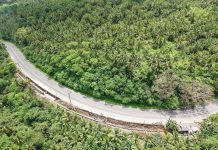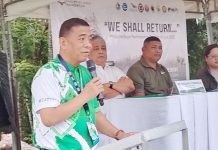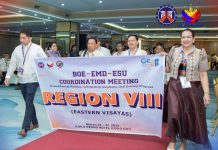TACLOBAN CITY – Eastern Visayas is shifting its development focus from information and communication technology (ICT) in the past six years to manufacturing from 2017 to 2022.
National Economic and Development Authority (NEDA) Regional Director Bonifacio Uy said it is more realistic for the region to attain economic growth from manufacturing sector than from ICT sector.
However, the 2017-2022 Regional Development Plan (RDP), which is up for review until last week of February, is still keeping agriculture and tourism as major thrusts for Eastern Visayas.
“There are several highly-educated graduates for ICT, but the challenge is our geography. We are prone to natural hazards that might cause destructions to operations of ICT companies,” Uy said.
He recalled that when supertyphoon “Yolanda” struck the region in 2013, a business process outsourcing firm with over 1,000 workers, suffered massive loss, prompting them to permanently shut down its operations in Palo, Leyte.
The Department of Science and Technology said there are about 3,000 workers in the region engaged in ICT-related jobs, including home-based businesses.
There are only four major ICT firms in the province which all engages in non-voice outsourcing.
Palo is the seat of the 6.8-hectare Leyte ICT Park and the 22-hectare Leyte Mikyu Economic Zone.
“We also need facilities to provide very reliable internet connections. The required internet connection is better in other parts of the country,” Uy added.
The development plan has tagged manufacturing as third main priority, citing the region’s existing support facilities.
Manufacturing firms at the Leyte Industrial Development Estate (LIDE) in Isabel town have been the major contributors in the Gross Regional Domestic Product.
LIDE houses the Philippine Associated Smelting and Refining Corporation and the Philippine Phosphate Fertilizer Corporation.
In 2015, the industry sector, where manufacturing subsector belongs, accounted 41.4 percent of the regional economy.
The RDP outlines strategies to attain up to seven percent economic growth in Eastern Visayas from 2017 to 2022.
The regional plan is considered as a “companion document” of the Philippines Development Plan for 2017 to 2022 or within the term of President Rodrigo Duterte.
The RDP, which serves as the blueprint of the region’s development direction, is anchored on the Sustainable Development Goals, the Long-Term Vision of Filipinos or AmBisyon Natin 2040 and President Duterte’s 0+10 Point Socioeconomic Agenda.
The RDC, the region’s highest policy-making body, approved the new RDP during its full council meeting on Dec. 20, 2016.
Under the plan, the region aims to attain 5.2 percent to 5.7 percent economic growth in 2017. For 2018 to 2022, the average target is 5.8 percent to seven percent.
(SARWELL Q.MENIANO)



